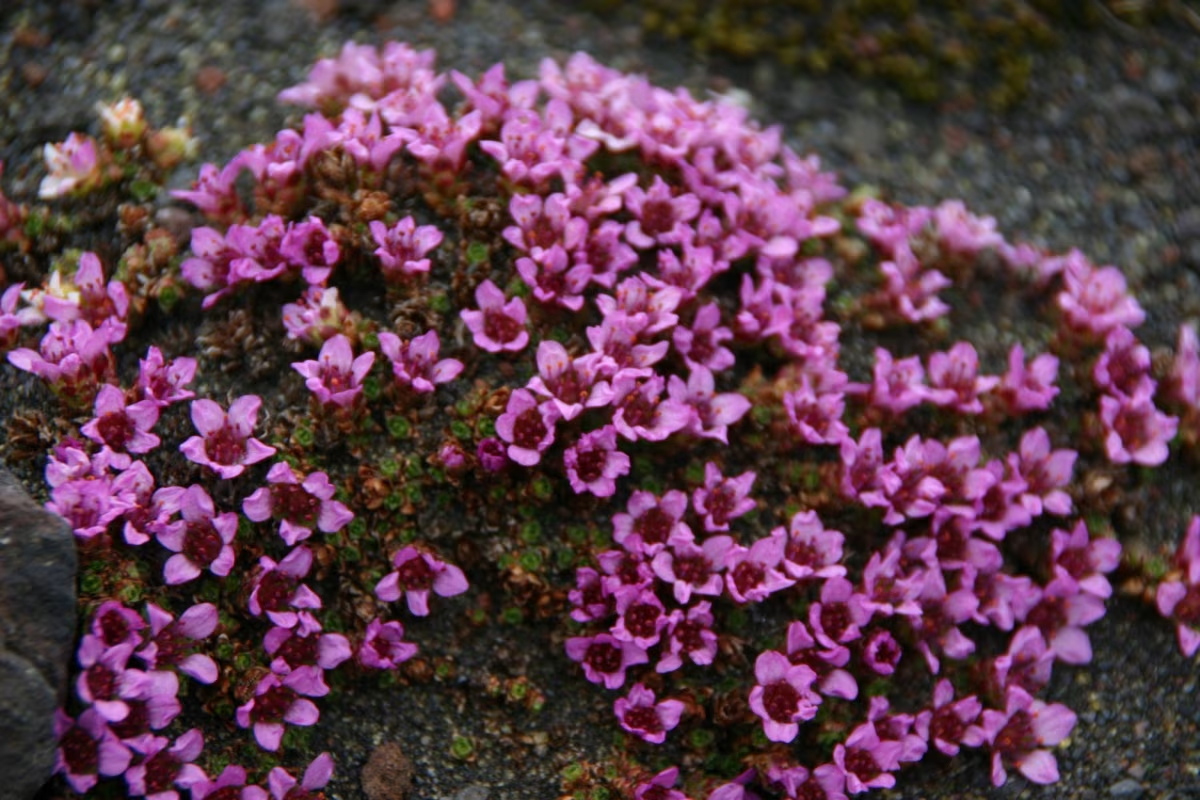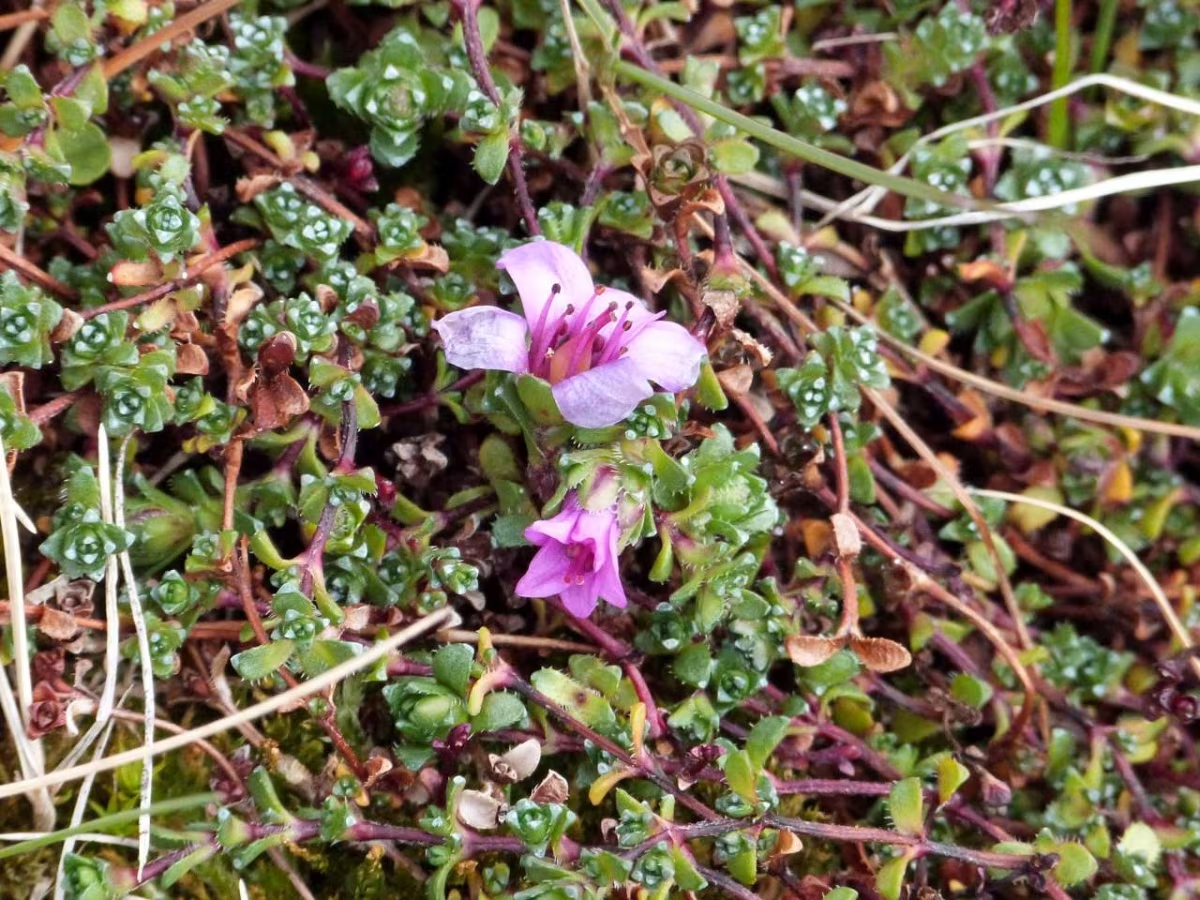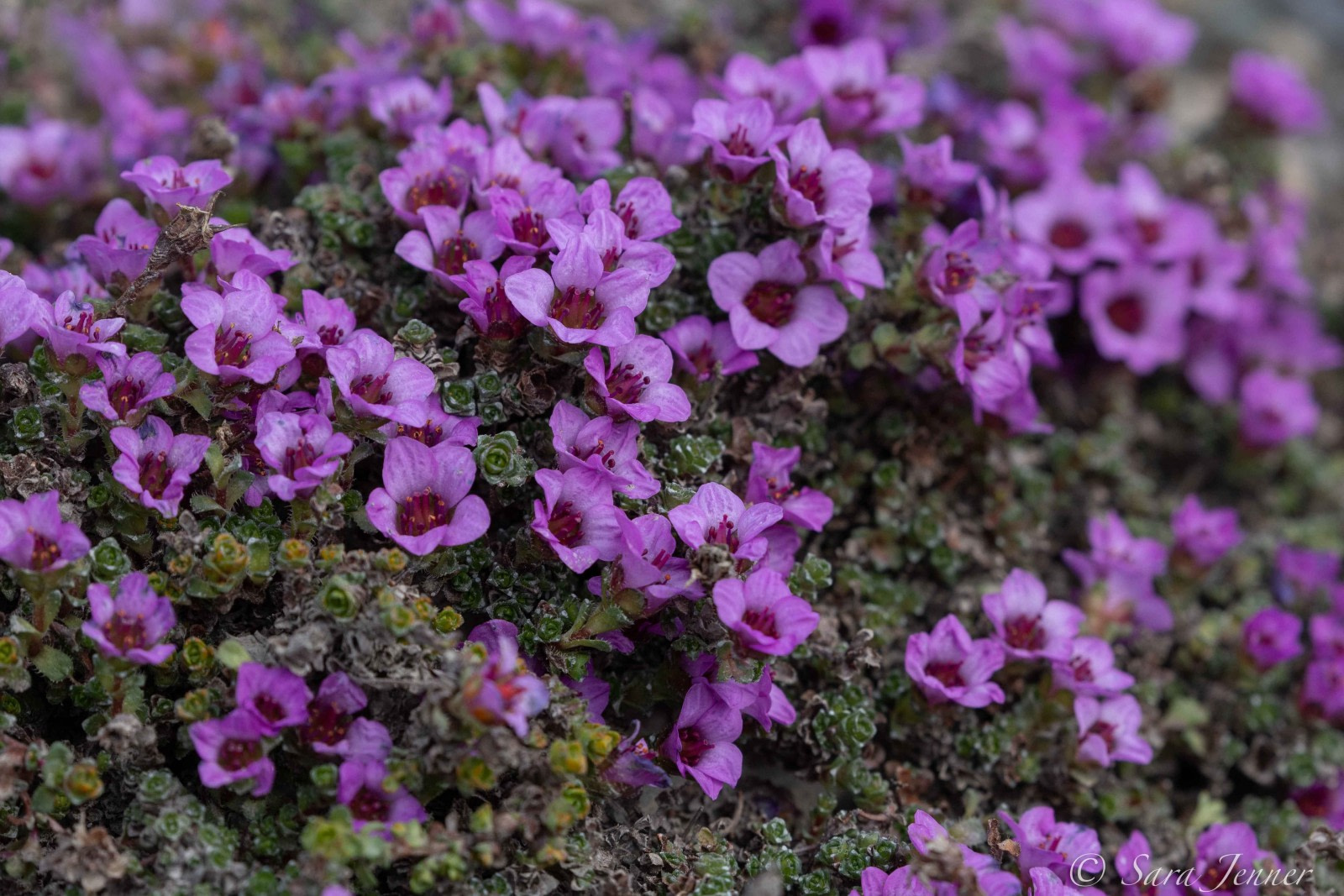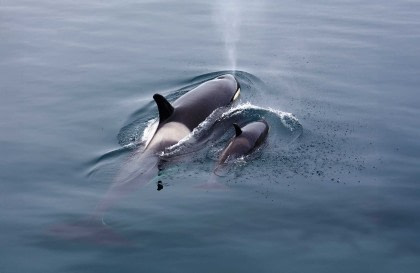Purple saxifrage (Saxifraga oppositifolia) is iconic among Arctic flora. Hardy, resilient, and beautiful, this small but vital plant thrives in some of the harshest environments on Earth. Known for its vibrant purple flowers, it adds splashes of color to the mountainsides, vast expanses of tundra, and rocky landscapes of the Arctic. It's also hugely popular with visitors to the northern polar regions.
Where does purple saxifrage grow?
Purple saxifrage grows in some of our planet's coldest and most remote places. It is a true survivor, flourishing throughout the Arctic Circle. You'll find this plant throughout the northern polar region, from northern Canada to Greenland, Svalbard, and Alaska. Purple saxifrage is commonly found in alpine areas across Europe, Asia, and North America due to its hardy nature. While it's best viewed in the Arctic, you can even find it as far south as the Alps and the Rocky Mountains.
Purple saxifrage is a hardy plant that grows in rocky crevices—common across the Arctic. The loose, gravelly soil in Svalbard and northern Canada is perfect for purple saxifrage's root systems, which can grow directly onto rock.
You might find purple saxifrage on your cruise to the Arctic. Depending on what time of year you join us, you may see it in full bloom or carpeting the landscape in stout green shrubbery, interspersed with other Arctic plants.

Picture by Majanda Fens
Purple saxifrage: a vital part of the Arctic ecosystem
Purple saxifrage, often the first plant species to bloom in the Arctic spring, emerges when snow is still on the ground, making it a crucial part of the Arctic ecosystem. Its early bloom provides a vital nectar source for insects and bees, supporting the initiation of Arctic food chains and pollinating it and other plant species throughout the region.
Because purple saxifrage grows in rocky, gravelly areas, it also helps stabilize hillsides and mountain slopes. Rocky areas can become unstable over time due to snowfall and snowmelt. However, the presence of purple saxifrage and other Arctic plant species can prevent rockfalls and erosion.
While it is a hardy plant, purple saxifrage is sensitive to changes in temperature and moisture levels. For this reason, it can be used as a bioindicator. If flourishing purple saxifrage is present, it may indicate that the environment is healthy. This plant can play a crucial role in continually monitoring the reasons for the signs and impact of climate change in the Arctic.

Picture by Victoria Salem
Purple saxifrage: perfectly adapted for survival
Surviving in the Arctic means surviving extremely low temperatures and very severe weather. All Arctic plants have adapted in various ways to survive in the far north - some with greater success than others. Purple saxifrage has adapted in several ways to flourish in the Arctic.
- It grows in low, carpet-like mounds. This helps to conserve heat as longer stems and branches dissipate heat much faster. Typically, purple saxifrage grows around 5cm from the ground.
- Purple saxifrage's leathery leaves reduce water loss. Given its harsh growing environment, purple saxifrage needs to minimize its water loss. However, if it grows on bare rock, finding water via root systems can be challenging.
- It maximizes it's potential in the summer season. The Arctic summer is relatively short, so plants need to take full advantage of warmer weather and the presence of bees and other insects. Purple saxifrage's bright, colorful flowers stand out, attracting pollinators throughout the season.
- It blooms early. Purple saxifrage emerges early from the frost and snow of an Arctic spring, giving it a head start on the competition and enabling it to secure a firm foothold ahead of the warmer summer months.
Some quickfire purple saxifrage facts
- It's a perennial, long-lived plant, often surviving for decades in the harsh Arctic environment.
- Purple saxifrage has been found on Kaffeklubben Island, north of Greenland. This spit of land contains the northernmost undisputed point on Earth, making purple saxifrage one of the northernmost-growing plants in the world.
- Purple saxifrage is the territorial flower of Nunavut in Canada, the symbolic flower of Nordland in Norway, and the county flower of County Londonderry in Northern Island.
- Indigenous Inuit communities brew tea using the leaves of purple saxifrage, which are known as aupilaktunnguat.
- It is a member of the Saxifraga genus, which contains over 473 plant varieties.

Picture by Katja Riedel
A jewel amongst Arctic flora
Purple saxifrage is one of many beautiful plants growing throughout the Arctic. Species such as boreal Jacob's ladder, moss campion, mountain avens, and other varieties of saxifrage carpet the landscape with color and vibrancy. A trip to the Arctic region isn't just a voyage into the realm of polar bears, icebergs, whales, and mountains. It's also a journey of discovery and a snapshot into how resilient the fauna and flora of the Arctic can be.
Svalbard and Greenland lie in the same floristic region, known as the Boreal Biogeographical Region; they naturally share much of the same plant life. Svalbard has over 160 vascular plant species but few trees except for the birch and low-growing willow species. Rich with tundra flowers like mountain avens, buttercups, and especially saxifrages, Svalbard boasts hardy, low-growing plants that can withstand immense snowpack and other extreme weather conditions. Greenland generally has more fertile tundra populated by bushes, flowers, and expansive areas of thick-growing heath. Purple saxifrage is also splendid among the colorful tundra.
Bright flowers and tiny plants add superb perspective to the Arctic ecosystem in such vast landscapes. You can get up close to the flora of the Arctic on many of our expedition cruises, hiking along shorelines or into the tundra of Greenland. For photographers or nature lovers, keeping one eye on the landscapes around you and one on the ground below your feet is always worthwhile. Remember—beauty is all around you in the Arctic!
Main image by Sara Jenner






